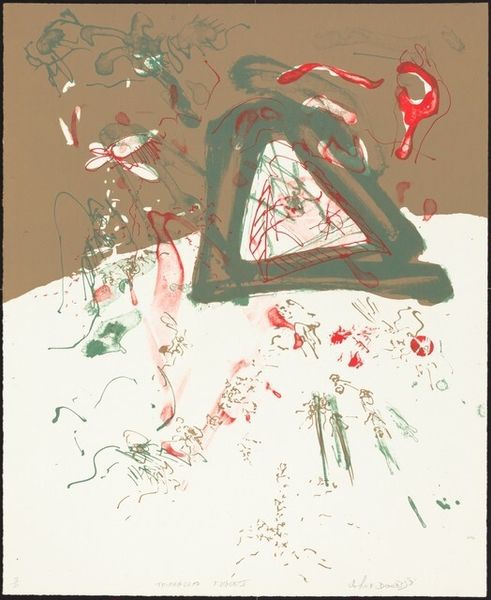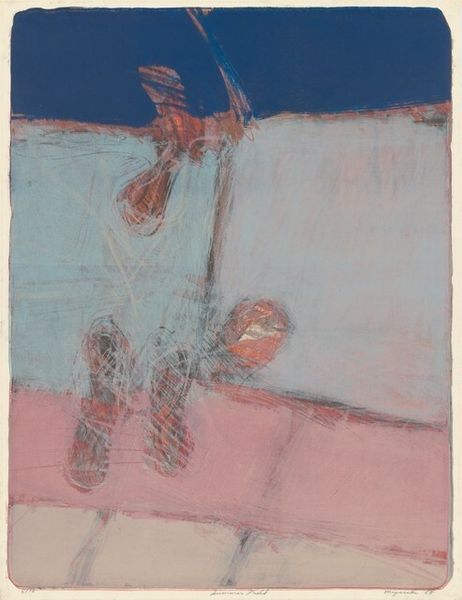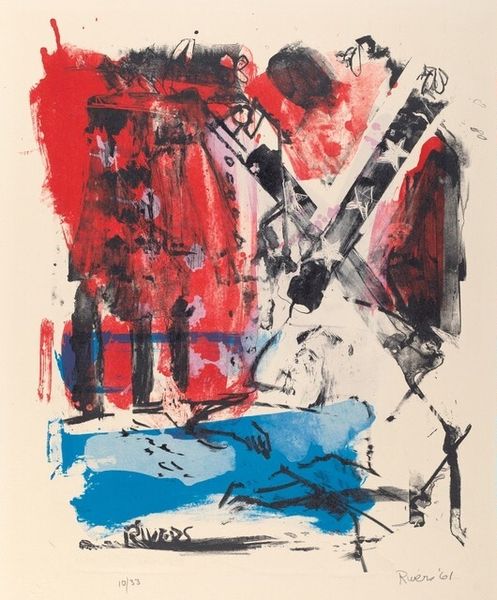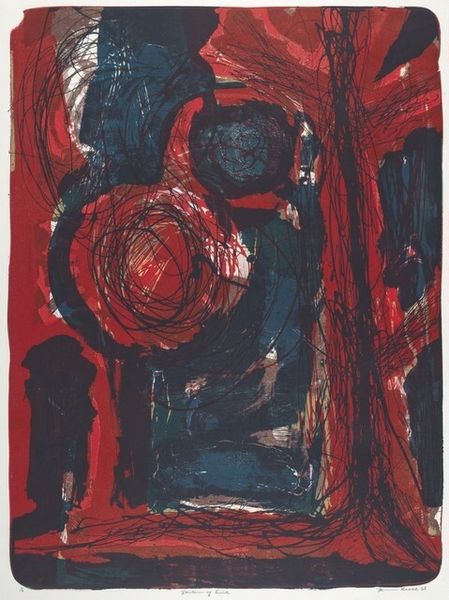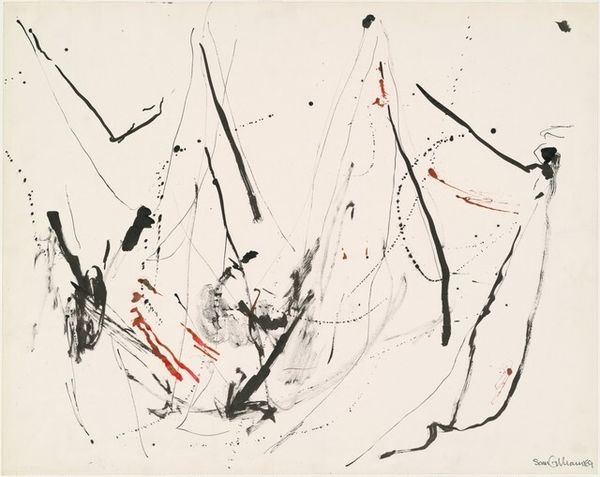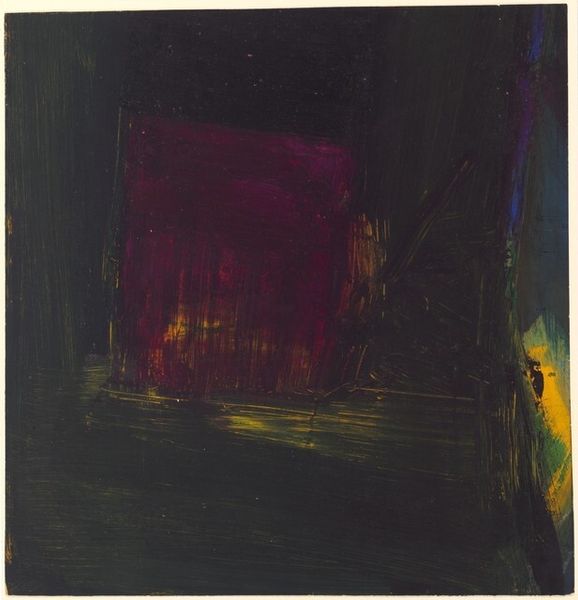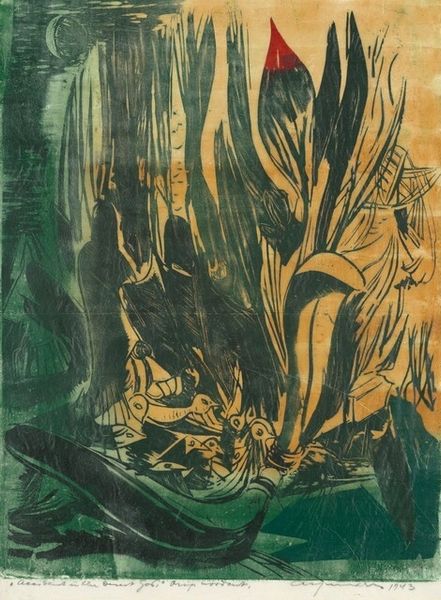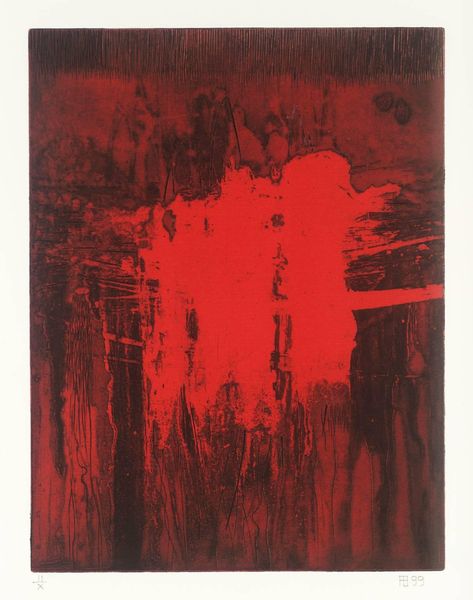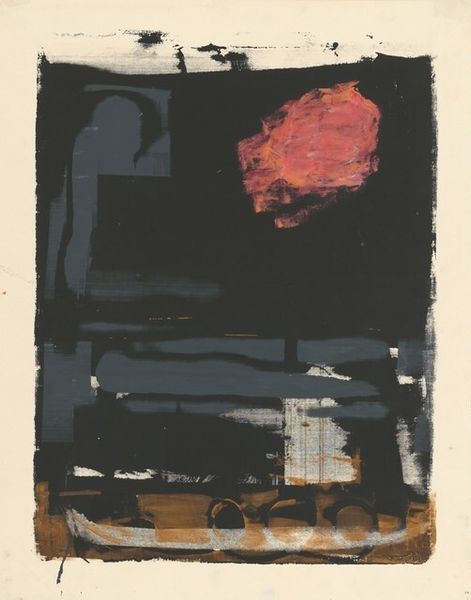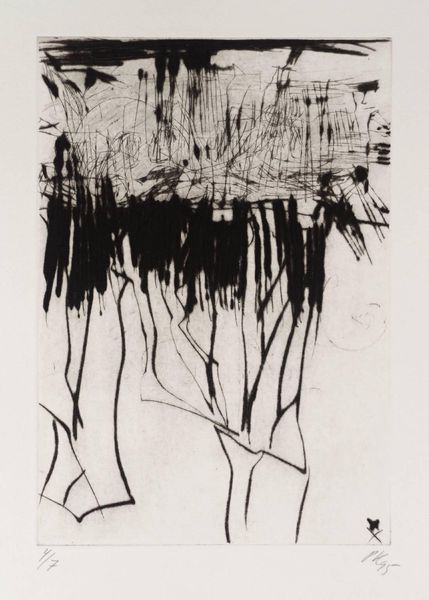
print, etching
#
abstract-expressionism
#
abstract painting
# print
#
etching
#
line
Copyright: National Gallery of Art: CC0 1.0
Editor: This is "Tokens VIII," an etching by Garo Antreasian, created in 1961. There's a striking contrast between the fiery red and deep black, almost like a landscape consumed by intense emotion. What do you see in this piece, especially given its creation in the early 60s? Curator: Well, its abstract expressionist style immediately situates it within a postwar context, where artists grappled with trauma and societal shifts. That intense red, combined with the chaotic linework, could be read as a response to Cold War anxieties, a visual representation of societal tension and the looming threat of nuclear annihilation. It’s interesting how Antreasian uses abstraction to convey a sense of unease, of something just below the surface about to explode. The title, "Tokens," also suggests a fragmented reality, reduced to symbols or signs of a larger, perhaps irretrievable, whole. Do you pick up on any specific signs of political expression? Editor: The way the dark, undefined space looms above definitely feels heavy. And I hadn’t thought of "Tokens" as fragmented, but that makes sense. Is it possible that abstraction itself was a political statement, a rejection of more traditional, representational art forms? Curator: Absolutely! Embracing abstraction can be interpreted as a challenge to established norms, a refusal to depict a world perceived as broken or dishonest in a traditional manner. Consider the societal pressures of conformity during that era; an abstract artist, through their art, was inherently questioning those structures. The bold use of color, especially red, might even symbolize revolutionary spirit, a refusal to be silenced or subdued. Do you find that interpretation convincing? Editor: Yes, thinking about the historical context really deepens the impact. I was initially just reacting to the visceral feeling, but now I see it’s layered with political and social meaning. Curator: Exactly. Art doesn't exist in a vacuum; it’s always in dialogue with the world around it. Looking at it through that lens unlocks so much more. Editor: I'll definitely remember that when I view abstract pieces from that period. It completely transforms how I see the piece.
Comments
No comments
Be the first to comment and join the conversation on the ultimate creative platform.
